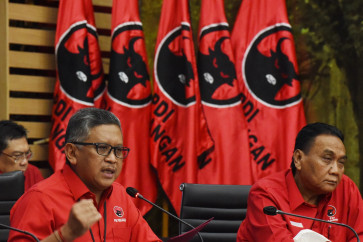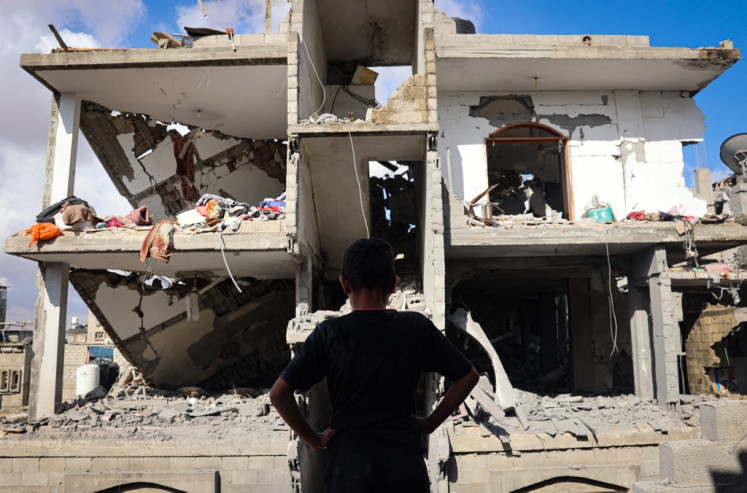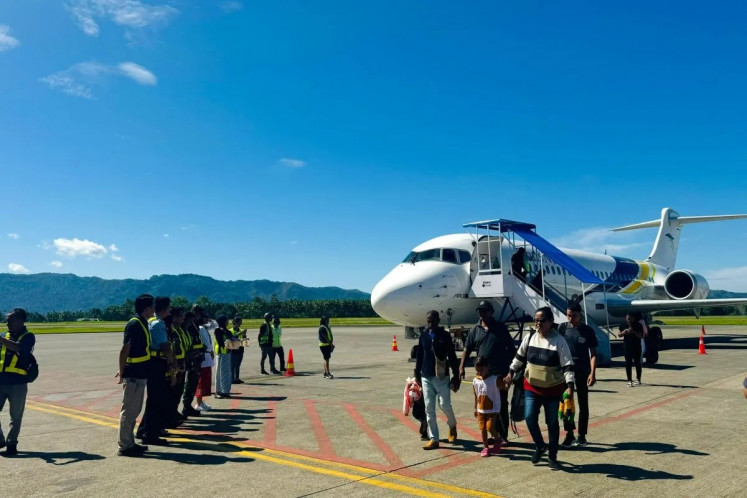Leadership for infrastructure
Despite the repeated government pronouncement since 2005 of a strong commitment to accelerating the development of basic infrastructure to fix the countryâs acute shortage of power, frail power grids, congested roads, seaports and airports, no significant progress seems to have been made in this sector
Change Size

D
espite the repeated government pronouncement since 2005 of a strong commitment to accelerating the development of basic infrastructure to fix the country's acute shortage of power, frail power grids, congested roads, seaports and airports, no significant progress seems to have been made in this sector.
Major projects still face tremendous challenges in land acquisition, feasibility studies and snags in the bidding process. The government more than doubled state budget appropriations for infrastructure to Rp 290 trillion (US$22 billion) this year, but as long as those problems are not tackled, infrastructure development will remain very slow.
The main problem is not the lack of financing but rather the dearth of well-prepared projects, bureaucratic barriers in land acquisition and lack of professional management for big projects. There has always been an acute lack of competent bureaucrats who have the authority and skills to design a pipeline of viable infrastructure deals and the political clout to standardize procurement procedures and other practicalities of getting a road, seaport or airport built.
Support institutions for the development of basic infrastructure have been established: the public-private partnership (PPP) scheme, PT Sarana Multi Infrastruktur (PT SMI) and PT Indonesia Infrastructure Finance (PT IIF) for project financing, PT Penjamin Infrastruktur Indonesia (PT PII) for improving the creditworthiness of projects, the Government Investment Center for financing land acquisition and a viability gap fund at the Ministry of Finance to ensure the financial viability of projects.
But with so many government institutions involved as players in the infrastructure sector, coordination has become a big problem due to the absence of a PPP management center to drive projects with proper planning, reliable risk analysis and risk sharing, design, efficient and well-organized tendering process and construction management. Now, PPP projects are handled by the ministries of finance, public works and national development planning without a single leadership.
There is also an urgent need for capacity building at the sub-national levels of government, which often serve as the contracting authorities in PPP concession deeds and are responsible for their delivery.
The 2012 Land Acquisition Law has been fully effective since January, but its enforcement will not likely be smooth without the support and full participation of local governments, which play an important role in securing appropriate compensation for land owners through independent appraisal teams.
Chief Economics Minister Sofyan Djalil last week tossed the idea of hiring foreign engineering supervisors for major infrastructure projects worth over $10 million to ensure the quality and scheduled completion of construction. The formation of a PPP center and the recruitment of foreign engineers would go a long way in helping speed up project development.
We should not be allergic to the participation of major foreign construction companies. We should instead optimize their operations for transferring skills and expertise to local contractors.









